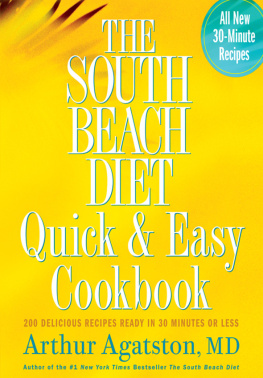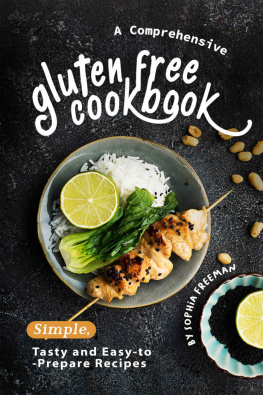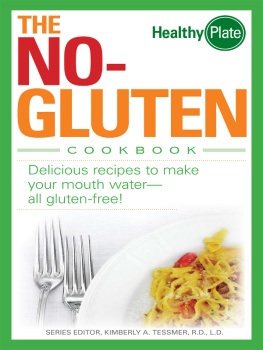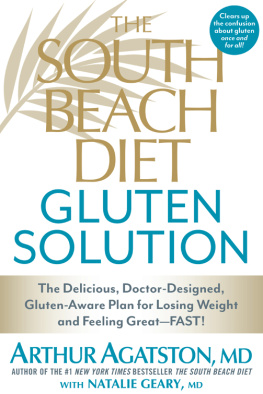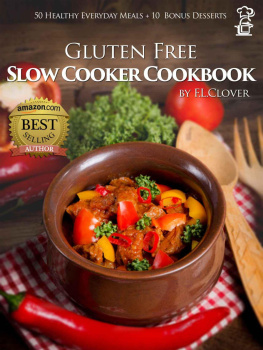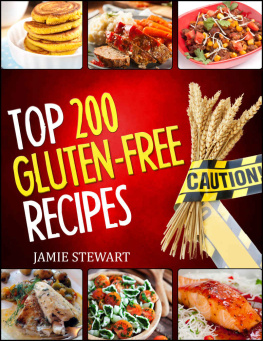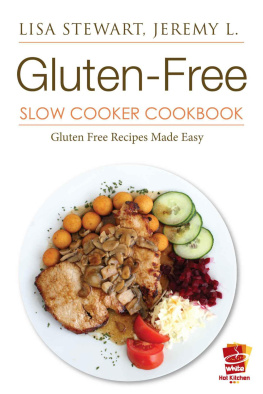This book is intended as a reference volume only, not as a medical manual.
The information given here is designed to help you make informed decisions about your health. It is not intended as a substitute for any treatment that may have been prescribed by your doctor. If you suspect that you have a medical problem, we urge you to seek competent medical help.
Mention of specific companies, organizations, or authorities in this book does not imply endorsement by the author or publisher, nor does mention of specific companies, organizations, or authorities imply that they endorse this book, its author, or the publisher.
Internet addresses and telephone numbers given in this book were accurate at the time it went to press.
2013 by Arthur Agatston, MD
The South Beach Diet is a Registered Trademark of the SBD Holdings Group Corp.
All rights reserved. No part of this publication may be reproduced or transmitted in any form or by any means, electronic or mechanical, including photocopying, recording, or any other information storage and retrieval system, without the written permission of the publisher.
Book design by Carol Angstadt
Photographs by Mitch Mandel/Rodale Images
Food styling by Adrienne Anderson
Prop styling by Paige Hicks
On the front cover:
On the back cover:
On the title page:
Library of Congress Cataloging-in-Publication Data is on file with the publisher.
ISBN-13: 9781623360474 hardcover
eISBN-13: 9781623360481

We inspire and enable people to improve their lives and the world around them.
rodalebooks.com
TO MY WIFE, SARI, AND SONS, EVAN AND ADAM
CONTENTS
ACKNOWLEDGMENTS
THERE ARE MANY PEOPLE who deserve credit for the time and energy they devoted to this book.
At Rodale, I would like to thank executive editor Trisha Calvo for her editorial expertise; art director Carol Angstadt for the striking design; photographer Mitch Mandel for his creative vision; food stylist Adrienne Anderson for making the recipes look so good; and prop stylist Paige Hicks for the beautiful backgrounds. I would also like to thank senior project editor Nancy N. Bailey for shepherding the book to completion and Beth Lamb, Brent Gallenberger, and Kristin Kiser for their marketing expertise.
For creating all of the original gluten-free recipes in this book, my special thanks go to Kate Slate, Sandra Rose Gluck, and Vanessa Maltin Weisbrod.
My appreciation as well to my agent, Mel Berger, of William Morris Endeavor, and publicists Sandi Mendelson and Cathy Gruhn of Hilsinger-Mendelson East in New York City.
I would also like to thank South Beach Diet nutrition director, Marie Almon, for the considerable time she spent planning and reviewing the book, and editorial director, Marya Dalrymple, for overseeing the project while also helping me to remain gluten aware.
Finally, this book, and The South Beach Diet Gluten Solution book that inspired it, would not have happened without the insights and support of my wife and partner, Sari Agatston.
FOREWORD
ON THE SOUTH BEACH DIET, we have always recommended eating a wide variety of healthy whole foods, including whole grains like wheat, barley, and rye that contain the protein gluten. And that hasnt changed. So how does a gluten-free cookbook fit in with our long-standing South Beach Diet eating principles?
To answer that, let me go back in time for a moment. The ironic thing is, just as I never intended to write a best-selling diet book when I created the South Beach Diet back in the early 1990s, I never expected to be writing about gluten today. But then, a few years ago, I had an epiphany when I realized I had new information to share that could potentially affect the lives of millions of people. I decided to write The South Beach Diet Gluten Solution, and now this companion cookbook.
The South Beach Diet Gluten Solution came about because for years I had noticed that many individuals on Phase 1 of the South Beach Diet, which was intentionally grain free but unintentionally gluten free, not only lost weight but often felt so great that they hesitated to progress to Phase 2. When they reintroduced gluten-containing grains on Phase 2, they often stopped feeling great. I eventually realized that gluten was the culprit explaining these observations. So I created the to help people figure out whether gluten could be at the root of their health problems.
Theres no question that for some peopleabout 1 percent of the populationgluten can be a matter of life or death. These people have a condition known as celiac disease. True celiacs, as they are called, are so sensitive to gluten that even a small amount can make them very sick. Gluten damages the lining of the small intestine in those with celiac disease, preventing the absorption of certain nutrients. This can lead to a host of health problems ranging from chronic diarrhea and abdominal cramping to osteoporosis and even the risk of some cancers.
Unless you are part of that 1 percent (and only special tests will let you know if you are), its unlikely that you will need to live a completely gluten-free lifestyle. But I have found that many of my patients are nevertheless gluten sensitivethey dont have celiac disease, but consuming gluten still leads to problematic symptoms. Whats interesting is that the level of gluten sensitivity varies from person to person. Its not a black or white condition.
That said, the only way that you can find out just how gluten sensitive you are, if at all, is to give up gluten for a few weeks. When people who are gluten sensitive eliminate foods containing gluten, they start to feel much better, often within a few days. They have better digestion, fewer headaches, sounder sleep, sharper mental focus, more energy, clearer skin and are generally in a better mood. They may even feel relief from more serious chronic conditions, like fibromyalgia, psoriasis, and thyroiditis. Its when they slowly begin to reintroduce gluten-containing foods in small quantities, after being off them for a while, that they learn which of these foodsor how much of themcan be consumed without triggering symptoms. Its the process of eliminating then gradually reintroducing gluten-containing foods that allows you to become what I call gluten aware.
I firmly believe that each individual needs to determine his or her own level of gluten sensitivity and awareness while enjoying the widest range of nutrient-rich foods possible: high-fiber vegetables, fruits, and whole grains, as well as lean protein and good fats. Remember, gluten free doesnt mean grain free (there are plenty of gluten-free whole grains such as brown rice, wild rice, and quinoa that are good for you), and it certainly doesnt mean sacrificing essential nutrients like vitamins, minerals, and fiber. It also doesnt mean giving up all bread, pasta, and those occasional decadent desserts, as youll see by paging through this book.
In working with our nutritionist and recipe developers to create this cookbook, I knew I wanted to give people healthy gluten-free recipes that they could draw upon as they were embarking on my Gluten Solution Program, and well beyond. I wanted recipes that, like all of the healthy South Beach Diet dishes in all of our cookbooks, were free of refined starches, sugar, and artery-clogging saturated fats, and packed with plenty of wholesome nutrients. I wanted recipes that were so delicious that no one would ever realize they were gluten free.


